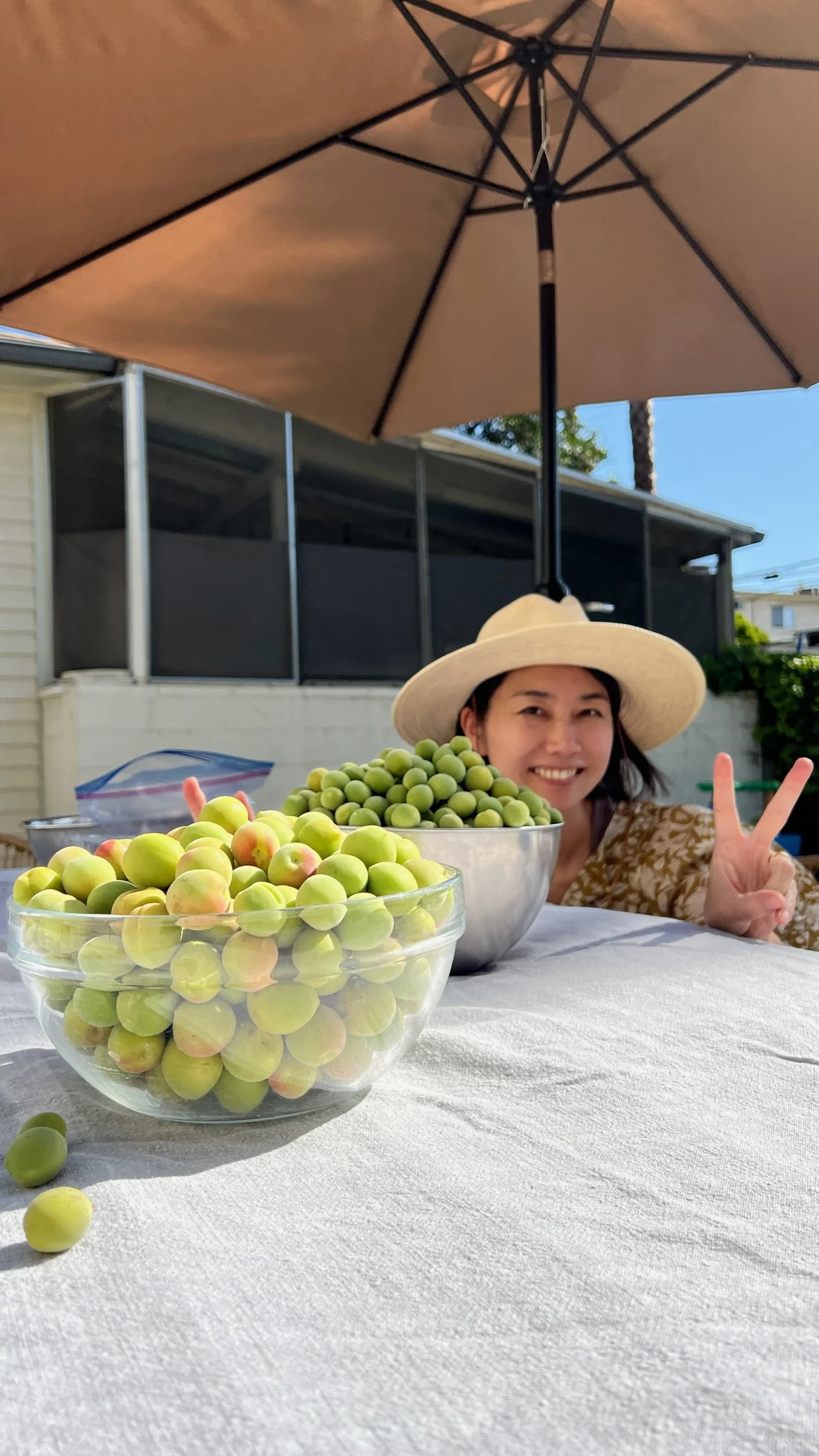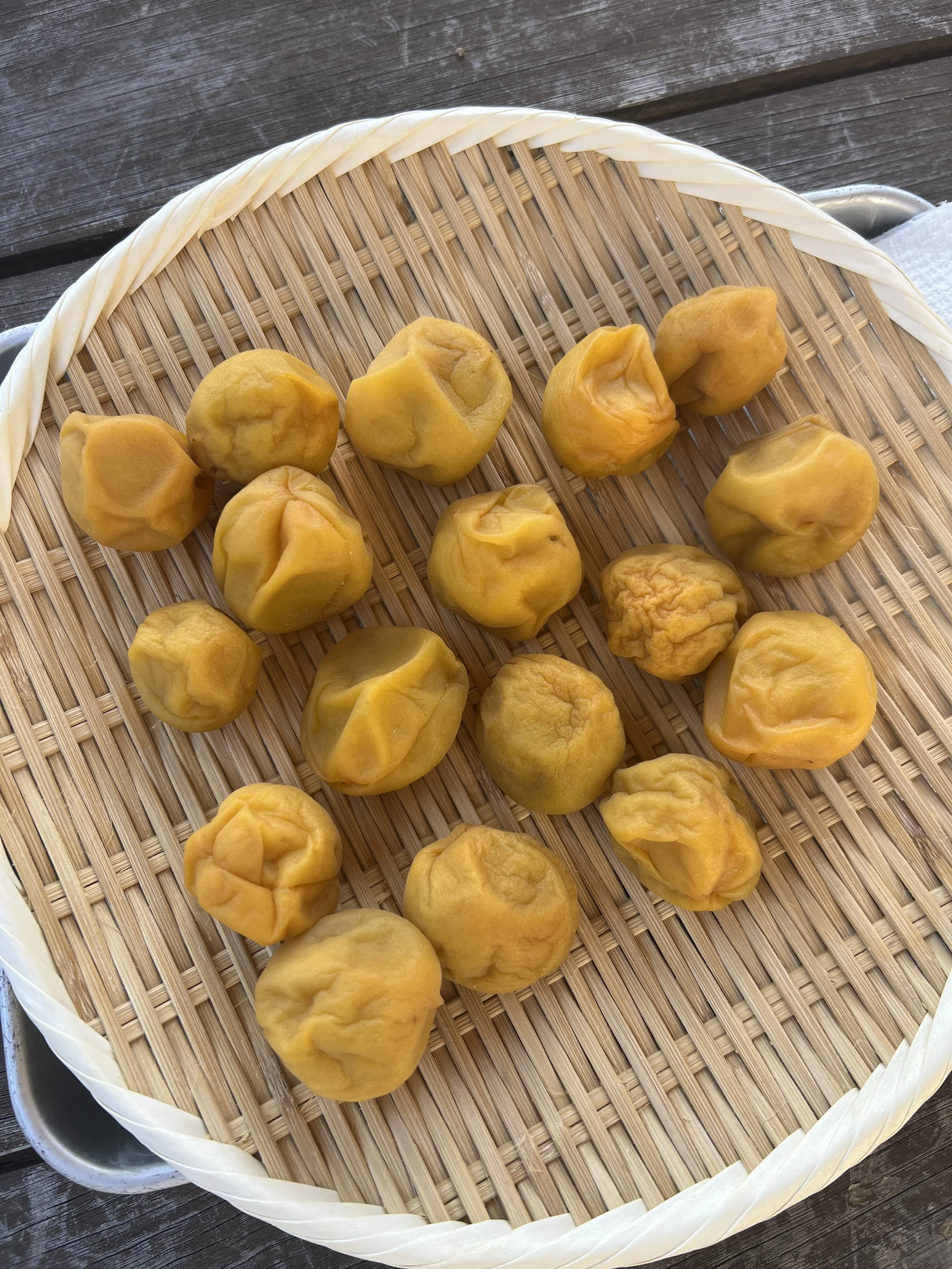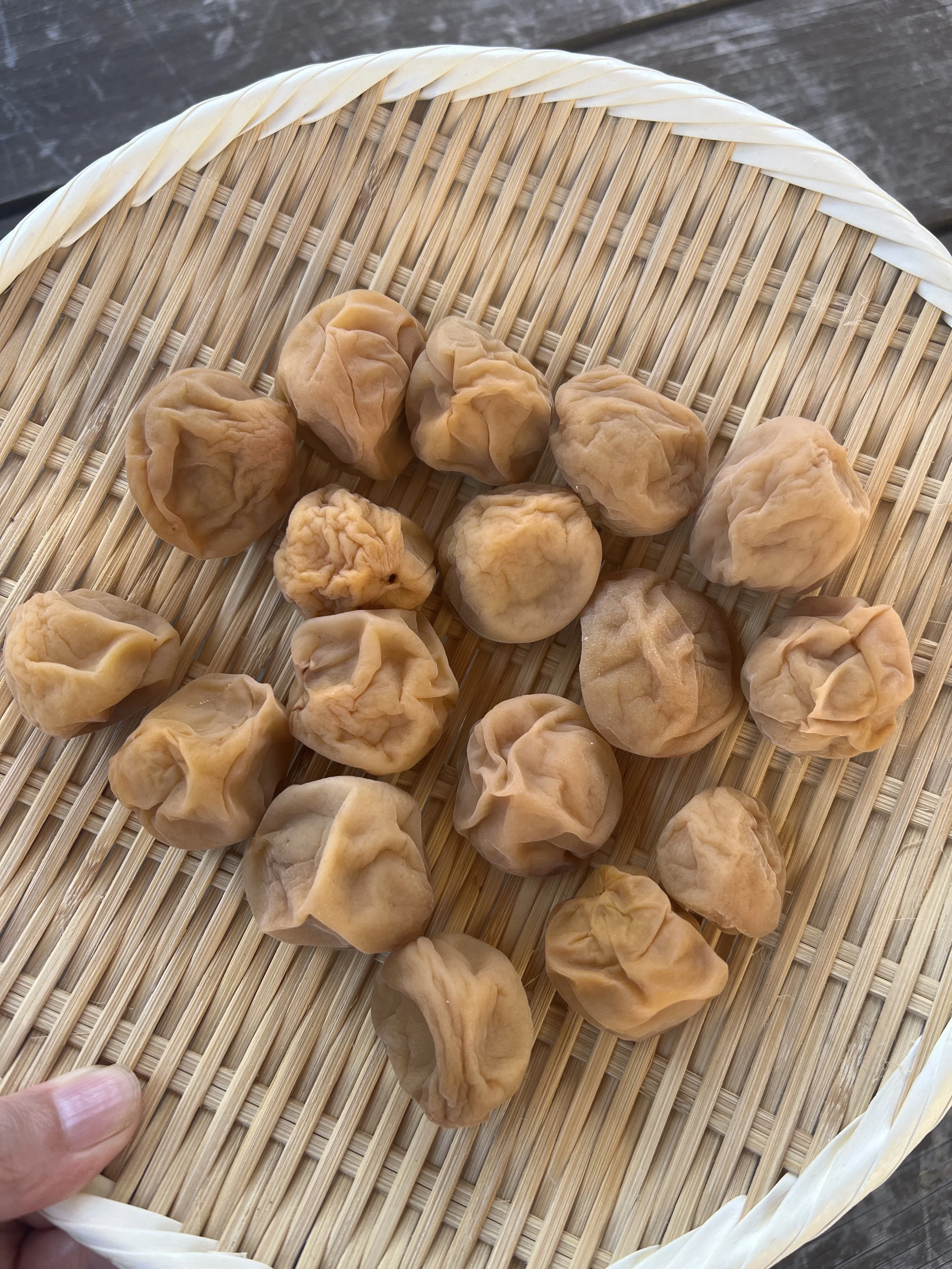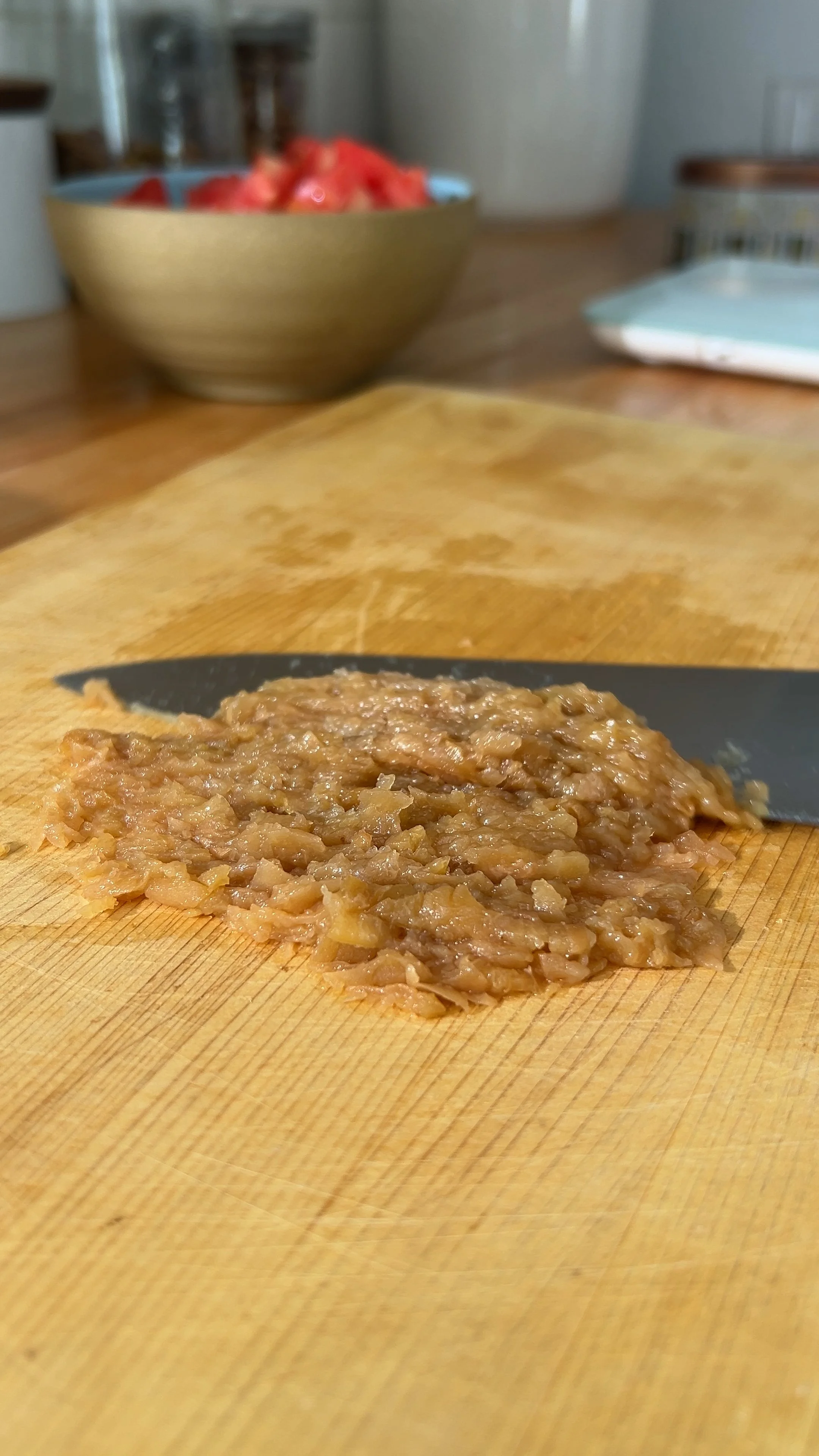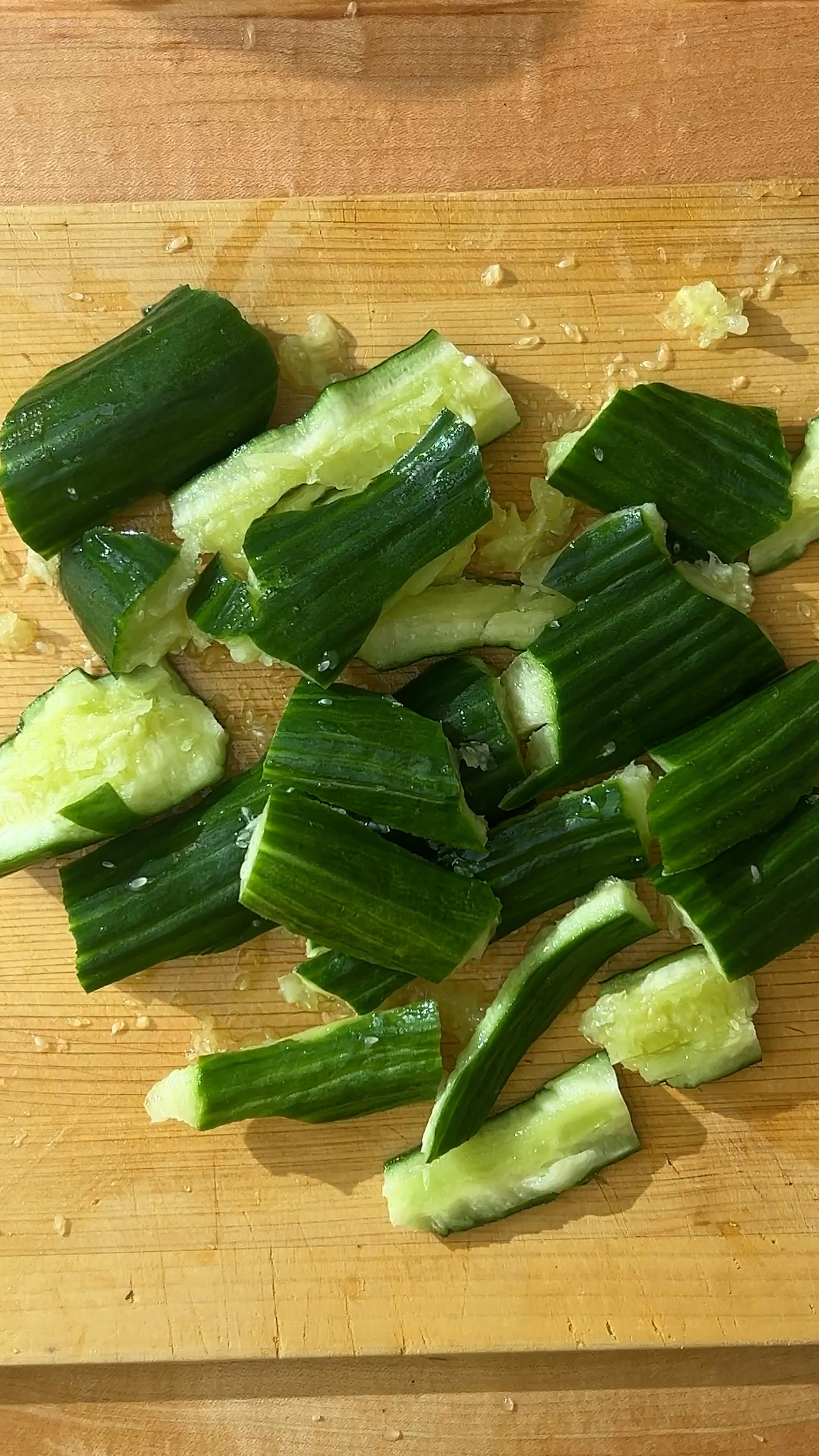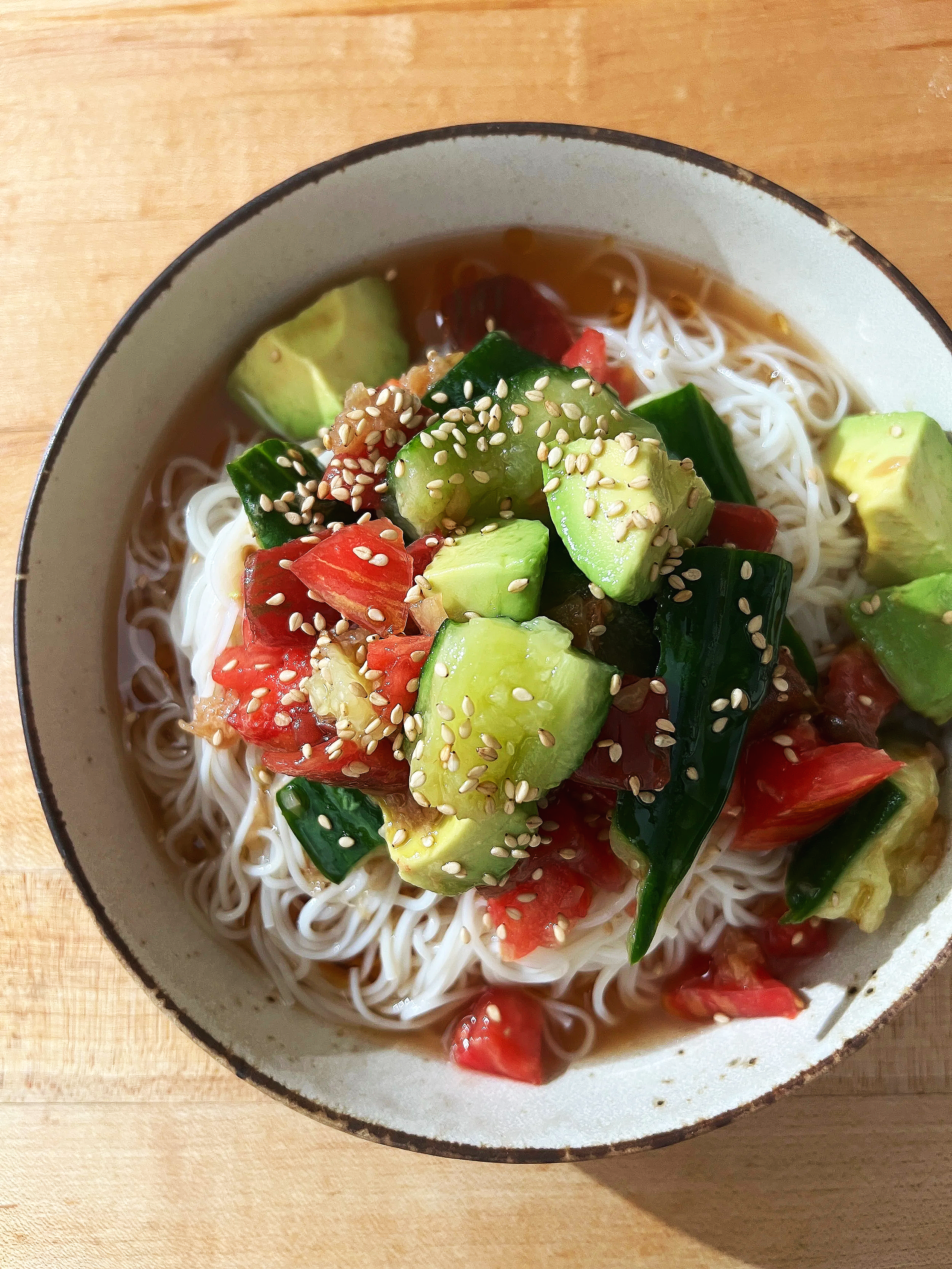Umeboshi and Tomato Salad
This tangy, umami rich salad is the perfect pick me up for hot summer days, helping to combat that sluggish, overheated feeling. Enjoy it on its own, or turn it into a more substantial meal by topping it over chilled noodles, creamy tofu, or protein like tender poached chicken or delicate white fish. It’s refreshing, nourishing, and satisfying all at once.
Fresh Ume
Have you had umeboshi before? It’s intensely sour but packed with health benefits. Umeboshi is salt-pickled ume, a Japanese fruit often called “Japanese apricot,” though botanically it’s closer to a plum. I live in Los Angeles, and it’s not too difficult to find ume. You’ll start seeing them around May in Japanese grocery stores, often displayed alongside rock sugar, large jars, and white liquor—hinting at making umeshu (plum wine). When ume is ripe, it releases a beautiful fragrance that’s sweet with subtle citrusy notes. The skin turns a pinkish yellow, which is the perfect stage for making umeboshi. My ume was given to me by my friend Sean—he knows a farmer who grows them. Thank you, Sean!
How to make Umeboshi
Umeboshi making takes time, patience, and most importantly, sunshine. First, you pickle the ume fruits with salt for a couple of months. Then comes the three-day sun-drying process, where you lay them out under the summer sun to develop that signature tang and chewy texture. In Japan, people usually pickle ume in June during the rainy season. After the rainy season ends, you need to check the weather forecast and find three consecutive clear days. You dry the ume outside for two days, then bring them indoors. On the third day, you leave them outside overnight to expose them to the night dew.
I was worried that squirrels or crows would eat the ume, but it seems like they are not interested. I did find one ume missing—probably taken by a squirrel or a bird—but I also found a whole ume nearby. I assume it was too sour for them to eat.
Umeboshi Before:
Traditionally, red shiso leaves are added during pickling to give umeboshi its iconic bright red color and a hint of herbal fragrance. I’ve made umeboshi twice, but both times I skipped the shiso—mostly because it’s so hard to find where I live. Even without it, the yellow ume naturally blush pink during drying.
Once dried, they’re stored in sterilized jars. Freshly pickled umeboshi is very sharp and salty, but as it ages, the flavors mellow and deepen.
Umeboshi After
Umeboshi is rich in antioxidants and citric acid, which can aid digestion and may help reduce fatigue. In Japan, it’s been used for generations to ease stomach discomfort, nausea, and even motion sickness. Whenever I’m feeling off, whether it’s a stomachache or motion sickness, ume is my go-to remedy. Here’s a quick run-down of the health benefits:
Rich in antioxidants that help protect cells from damage
Contains citric acid, which aids digestion and helps reduce fatigue
Traditionally used to relieve stomach discomfort, nausea, and motion sickness
May support liver health and detoxification
Has antibacterial properties that can help prevent infections
Can help balance the body’s pH by reducing acidity
Supports healthy gut bacteria due to its fermentation process
May boost the immune system thanks to its nutrients and probiotics
Umeboshi is a superfood!
Umeboshi Paste
For this dish, I use umeboshi as a seasoning in a refreshing tomato and cucumber salad. One of the most popular uses for umeboshi is as rice ball stuffing, but when using it for cooking, think of it as a substitute for acidic ingredients like vinegar or lemon. Remove the pit and chop the umeboshi into a paste with a knife. When you mix it with diced tomatoes, it breaks down the tomatoes and creates a perfect sauce. For the cucumber, I smashed it with a rolling pin. Smashed cucumber is perfect for this recipe because it creates more surface area to soak up the sauce. Since cucumber contains a lot of water, I sprinkle it with a generous amount of salt, leave it for about 5 minutes, and draw out some of the moisture. I mixed it with cucumber and avocado, but you can also add chicken if you like. This chunky salad is great as a topping for cold noodles or chilled tofu.
Smashed Cucumber
When using this salad as a topping for noodles or tofu, I recommend pouring some tsuyu over it (recipe below). My tsuyu is fish-based, but if you prefer a plant-based version, you can use shiitake mushroom dashi instead. I also sprinkle some sesame oil and toasted sesame seeds on top to add extra flavor and aroma.
For the noodles, I chose somen. They are thin and delicate, with a mild flavor that doesn’t overpower the dish like soba noodles sometimes can (in a good way). Plus, somen cooks in just a couple of minutes, making it perfect for hot summer days. If you haven’t tried somen yet, I highly recommend giving it a try. You can usually find it easily at Japanese grocery stores. It’s a versatile and refreshing noodle option that pairs beautifully with this tangy salad.
Umeboshi and Tomato Salad
Prep time 15 minutes
Cooking time: 15 min
Total 30 min
Serves 2
Ingredients
Umeboshi and Tomato
2 medium sized tomatoes
3 umeboshi
1 cucumber
1 avocado
Tsuyu
1 ¼ cups dashi
¼ cup mirin
¼ cup Japanese soy sauce
Toppings
1 tablespoon sesame oil
1 teaspoon toasted sesame seeds
Preparation
Dice the tomatoes into small cubes and place them in a small bowl.
Remove the pit from the umeboshi and chop it into a paste. Add the paste to the bowl with the diced tomatoes and mix well. Set aside.
Smash the cucumbers. Covering them with kitchen towels helps prevent splattering. Place the smashed cucumbers in a medium-sized bowl. Sprinkle with salt and toss well. Leave them for at least 10 minutes to draw out moisture, then discard the liquid.
Add the tomato and umeboshi mixture to the cucumber bowl. Add the cut avocado and mix well.
Serve the mixture as a topping on noodles such as somen, soba, or cappellini. Pour tsuyu over it and drizzle with sesame oil. Sprinkle toasted sesame seeds on top. This salad also makes a great topping for tofu.
